Toxic Pearl: The Cautionary Tale of Pesticides in Willapa Bay
A couple of days ago, I received an email from an environmental lawyer in Olympia. I had spoken with her before. She simply inquired if I had an opinion on the permit that had just been issued for the use of a pesticide to kill eel grass on clam beds in the bay. It reminded me of a book I was lent last summer that I found fascinating and an interesting insight into the recent history of our bay.
As you know, the Willapa Bay is one of the most productive estuaries in the United States, renowned for its rich oyster beds, thriving eelgrass meadows, and diverse marine life. But beneath this natural beauty lies a complicated environmental history. The book Toxic Pearl by M. Perle brings that story to light, uncovering the decades-long use of pesticides in Willapa Bay and the profound consequences it had on the ecosystem, industry, and community.
The Rise of the Oyster Industry
Oyster farming has been central to Willapa Bay for over a century and a half. As the industry expanded, growers faced a persistent challenge: the indigenous burrowing shrimp. These small creatures destabilize the mudflats, causing oysters to sink and die. In an effort to preserve their livelihoods, farmers turned to chemical solutions.
The Chemical Solution
Starting in the 1960s, pesticides like carbaryl were applied to the Bay to control shrimp populations. It was seen as a necessary intervention to protect oyster beds. For a time, the strategy seemed effective. But the longer-term consequences soon began to surface — fish kills, disrupted food webs, and damage to vital habitats.
The Fallout
Toxic Pearl weaves together voices from the scientific community, environmental advocates, and local residents to paint a full picture of what happens when short-term fixes override ecological foresight. The book doesn’t point fingers as much as it holds up a mirror: to the regulatory systems that failed to adapt, and to the communities forced to choose between economy and environment.
A New Chapter for Willapa Bay
At Willapa Wild, we’ve taken these lessons to heart. We’ve embraced regenerative, non-toxic practices that prioritize the long-term health of the Bay. Our recent eelgrass restoration project is now the largest privately funded effort of its kind in U.S. history. We believe the future of Willapa Bay depends on working with nature, not against it.
Why It Matters
Toxic Pearl is more than a history book. It’s a wake-up call — and a guide. It reminds us that environmental responsibility isn’t just a value, it’s a necessity. For those who love oysters, coastal ecosystems, and the stories behind our food, it’s a must-read.
And if you’re looking for oysters raised with intention and care, grown in a Bay we’re helping to protect — you’ve found them.
